Birdfinding.info ⇒ One of the more familiar and adaptable woodland songbirds across most of its range. A common breeder in mature forests of the eastern U.S. and Canada (see Breeding Bird Survey Abundance Map in Notes, below). In winter, probably most abundant in Florida and the Greater Antilles. Striking black-and-white striped pattern and conspicuous nuthatch-like behavior make detection and identification easier than for most species.
Black-and-white Warbler
Mniotilta varia
Breeds in central and eastern North America. Winters from the southern U.S. to northern South America.
Breeding. Deciduous and mixed forests across Canada from the southeastern Yukon to Newfoundland, and south through the Great Plains and eastern U.S. to Texas and Georgia. Presence in the Great Plains is patchy, tied to the availability of suitably wooded habitat.
Nonbreeding. Widespread in most types of woodlands from Florida through the West Indies, and on the mainland from southern Texas and western Mexico to Ecuador and Venezuela. Winters in small numbers north to California, Arizona, and South Carolina, south to Peru, and east to Trinidad. Isolated individuals sometimes overwinter farther north.
Movements. Migration periods are protracted, with northbound movements through the U.S. from early March through May, and southbound from late July through October.
Often recorded west of its usual range, and probably regular in small numbers throughout the western states. Also an occasional vagrant to Europe.
Identification
Streaked and striped in black and white, with bold white eyebrow and wingbars, in all plumages. Foraging behavior is distinctive, creeping along branches and trunks like a nuthatch.
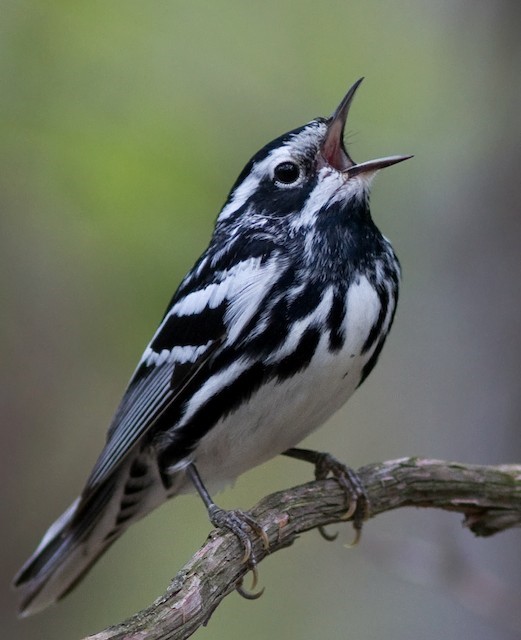
Black-and-white Warbler, male in breeding plumage, singing. (Piney Mountain Road, Garrett State Forest, Maryland; May 21, 2013.) © Mark R. Johnson
Breeding male has more extensive black than other plumages, especially on the cheeks, throat, and chest.
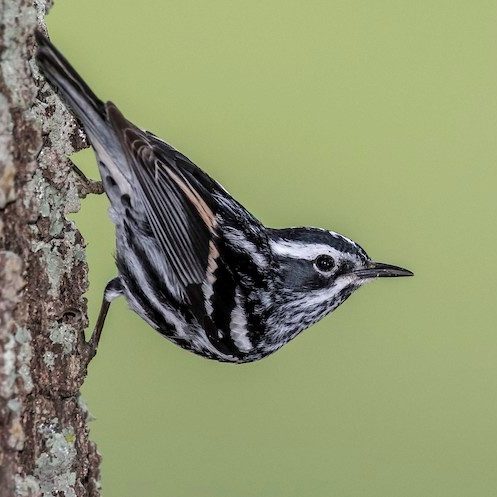
Black-and-white Warbler, male in breeding plumage, showing a stain or other discoloration on the wing. (Markham Park, Sunrise, Florida; March 21, 2017.) © David Hall

Black-and-white Warbler, male in breeding plumage. (South Padre Island, Texas; May 5, 2017.) © Jason Leifester
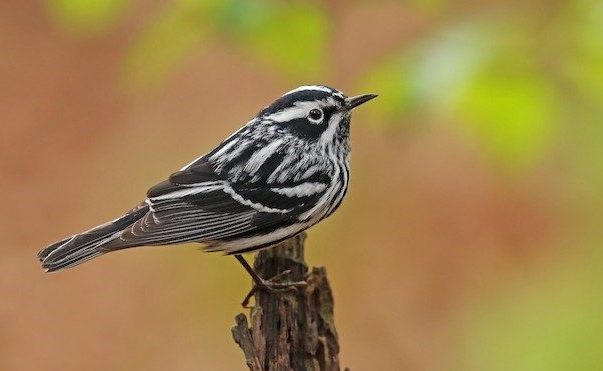
Black-and-white Warbler, male in breeding plumage. (Newton Hill, Worcester, Massachusetts; May 6, 2017.) © Ryan Schain
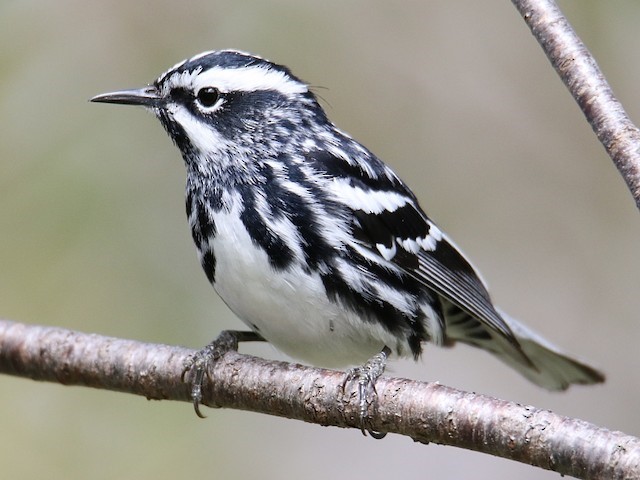
Black-and-white Warbler, male in breeding plumage. (Oxen Pond Trail, St. John’s, Newfoundland; June 17, 2017.) © Pavel Parkhaev

Black-and-white Warbler, male in breeding plumage. (Fenway Victory Gardens, Boston, Massachusetts; May 24, 2011.) © Ryan Schain
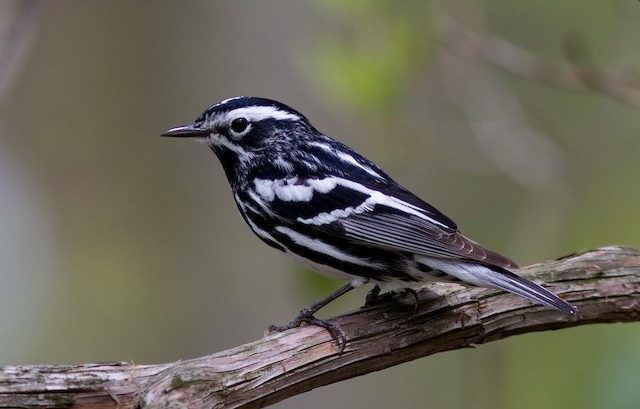
Black-and-white Warbler, male in breeding plumage. (Piney Mountain Road, Garrett State Forest, Maryland; May 21, 2013.) © Mark R. Johnson

Black-and-white Warbler, male in breeding plumage. (Labadie, Haiti; March 16, 2018.) © Graham Williams
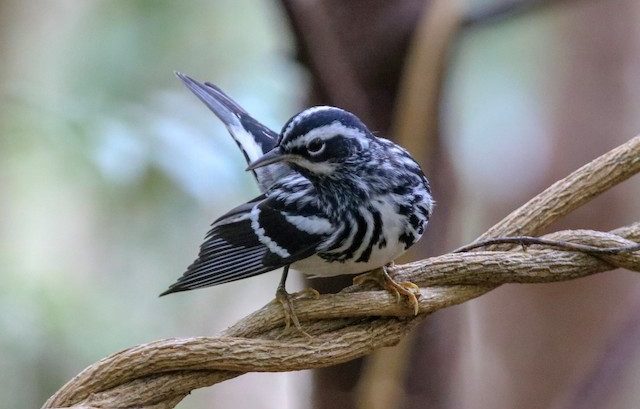
Black-and-white Warbler, male in breeding plumage. (Labadie, Haiti; March 16, 2018.) © Graham Williams

Black-and-white Warbler, male in breeding plumage. (Santo Domingo, Dominican Republic; March 5, 2016.) © Dax M. Román E.
Nonbreeding males have white throats, and variable amounts of black on the cheeks and chest.
Females and immatures are similar to nonbreeding males, but more exclusively white on the cheeks and chest.
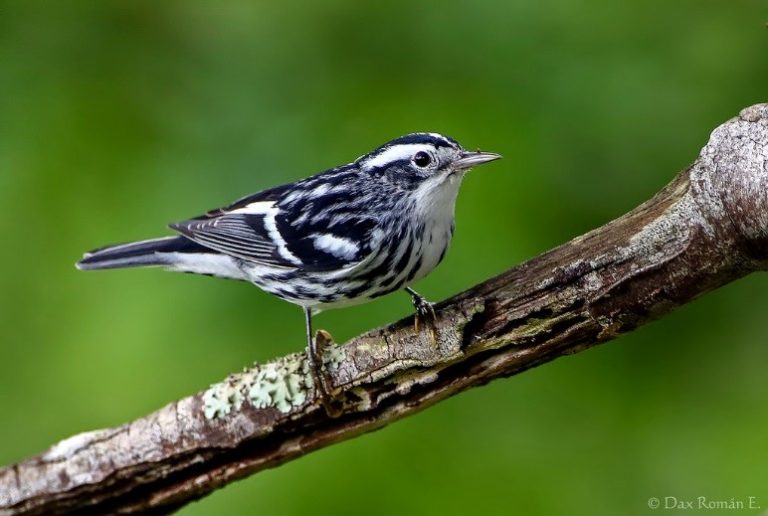
Black-and-white Warbler, male in nonbreeding plumage. (National Botanical Garden, Santo Domingo, Dominican Republic; December 4, 2013.) © Dax M. Román E.
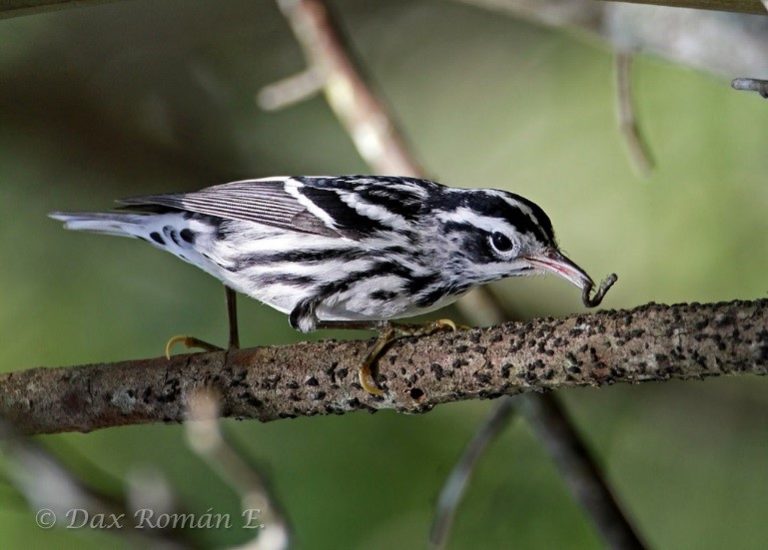
Black-and-white Warbler, male in nonbreeding plumage, holding a grub in its bill—note the large size of the feet. (Dominican Republic; January 20, 2012.) © Dax M. Román E.
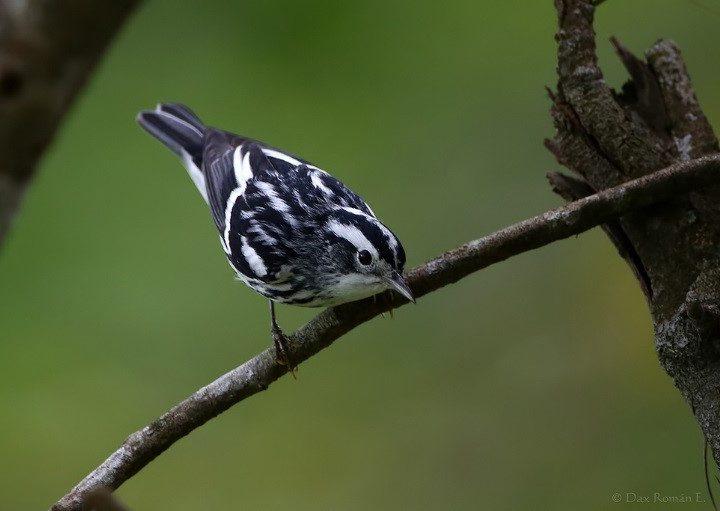
Black-and-white Warbler, male in nonbreeding plumage. (Dominican Republic; December 4, 2013.) © Dax M. Román E.

Black-and-white Warbler, female or immature male. (Lomas Lindas, Dominican Republic; September 22, 2013.) © Dax M. Román E.

Black-and-white Warbler, female or immature male—note the large size of the feet. (Bubali Bird Sanctuary, Aruba; September 14, 2017.) © Michiel Oversteegen

Black-and-white Warbler, female or immature male. (Lomas Lindas, Dominican Republic; September 29, 2013.) © Dax M. Román E.

Black-and-white Warbler, female. (Lomas Lindas, Dominican Republic; September 22, 2013.) © Dax M. Román E.

Black-and-white Warbler, male in nonbreeding plumage. (Corkscrew Swamp Sanctuary, Florida; November 6, 2017.) © Doug Beach
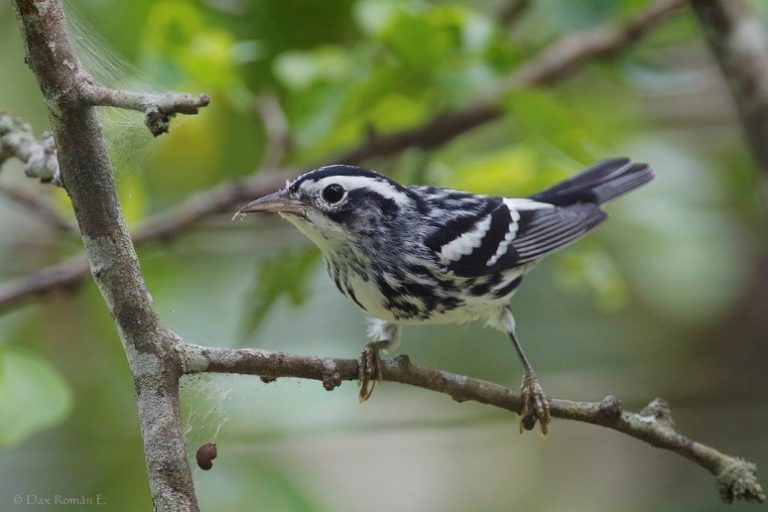
Black-and-white Warbler, male in nonbreeding plumage. (Dominican Republic; October 17, 2016.) © Dax M. Román E.
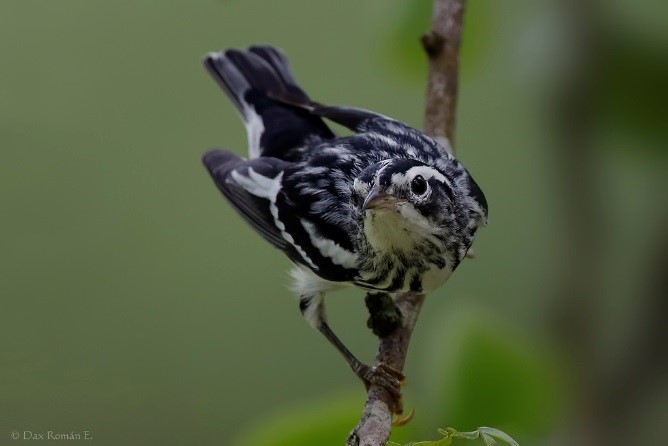
Black-and-white Warbler, male in nonbreeding plumage. (Dominican Republic; October 17, 2016.) © Dax M. Román E.

Black-and-white Warbler, female. (Falmouth, Jamaica; January 31, 2019.) © Matthew Grube

Black-and-white Warbler, immature female. (Cherry Hill Nature Preserve, Ypsilanti, Michigan; September 13, 2017.) © Brendan Klick
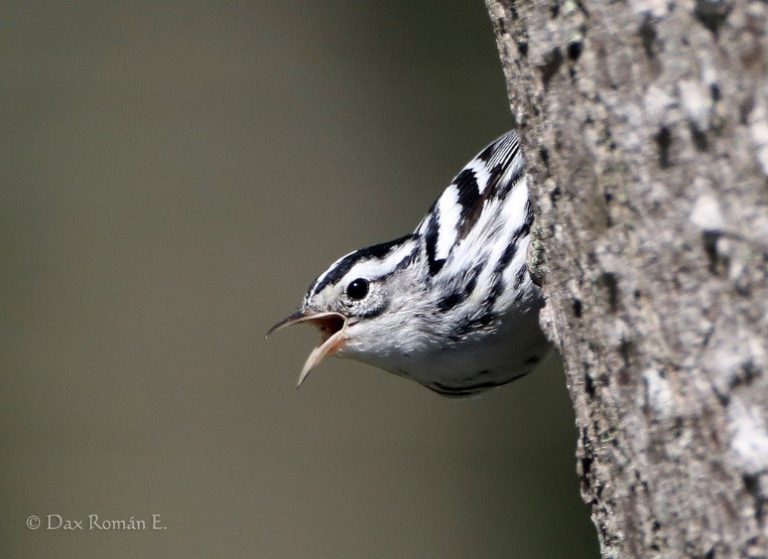
Black-and-white Warbler, female or immature male. (Lomas Lindas, Dominican Republic; September 22, 2013.) © Dax M. Román E.

Black-and-white Warbler, female. (Markham Park, Sunrise, Florida; March 21, 2017.) © David Hall
Notes
Monotypic species.
References
Alderfer, J., and J.L. Dunn. 2014. National Geographic Complete Birds of North America (Second Edition). National Geographic Society, Washington, D.C.
Ascanio, D., G.A. Rodriguez, and R. Restall. 2017. Birds of Venezuela. Christopher Helm, London.
Dunn, J.L., and K.L. Garrett. 1997. A Field Guide to Warblers of North America. Houghton Mifflin, Boston.
eBird. 2019. eBird: An online database of bird distribution and abundance. Cornell Lab of Ornithology, Ithaca, N.Y. http://www.ebird.org. (Accessed March 16, 2019.)
Fagan, J., and O. Komar. 2016. Peterson Field Guide to the Birds of Northern Central America. Houghton Mifflin Harcourt, New York.
ffrench, R. 2012. A Guide to the Birds of Trinidad & Tobago (Third Edition). Cornell University Press, Ithaca, N.Y.
Garrido, O.H, and A. Kirkconnell. 2000. Field Guide to the Birds of Cuba. Cornell University Press, Ithaca, N.Y.
Garrigues, R., and R. Dean. 2014. The Birds of Costa Rica: A Field Guide (Second Edition). Cornell University Press, Ithaca, N.Y.
Howell, S.N.G., and S. Webb. 1995. A Guide to the Birds of Mexico and Northern Central America. Oxford University Press, Oxford.
Latta, S., C. Rimmer, A. Keith, J. Wiley, H. Raffaele, K. McFarland, and E. Fernandez. 2006. Birds of the Dominican Republic and Haiti. Princeton University Press, Princeton, N.J.
McMullan, M., and T. Donegan. 2014, Field Guide to the Birds of Colombia (Second Edition). Fundación Proaves de Colombia, Bogotá.
Raffaele, H. 1989. A Guide to the Birds of Puerto Rico and the Virgin Islands. Princeton University Press, Princeton, N.J.
Raffaele, H., J. Wiley, O. Garrido, A. Keith, and J. Raffaele. 1998. A Guide to the Birds of the West Indies. Princeton University Press, Princeton, N.J.
Ridgely, R.S., and P.J. Greenfield. 2001. The Birds of Ecuador, Volume II: Field Guide. Cornell University Press, Ithaca, N.Y.
Ridgely, R.S., and J.A. Gwynne. 1989. A Guide to the Birds of Panama (Second Edition). Princeton University Press, Princeton, N.J.
Ridgely, R.S., and G. Tudor. 2009. Field Guide to the Songbirds of South America: The Passerines. University of Texas Press, Austin.
Salt, W.R., and J.R. Salt. 1976. The Birds of Alberta. Hurtig Publishers, Edmonton, Alberta.
Schulenberg, T.S., D.F. Stotz, D.F. Lane, J.P. O’Neill, and T.A. Parker. 2007. Birds of Peru. Princeton University Press, Princeton, N.J.
Wells, J.V., and A.C. Wells. 2017. Birds of Aruba, Bonaire, and Curaçao. Cornell University Press, Ithaca, N.Y.


